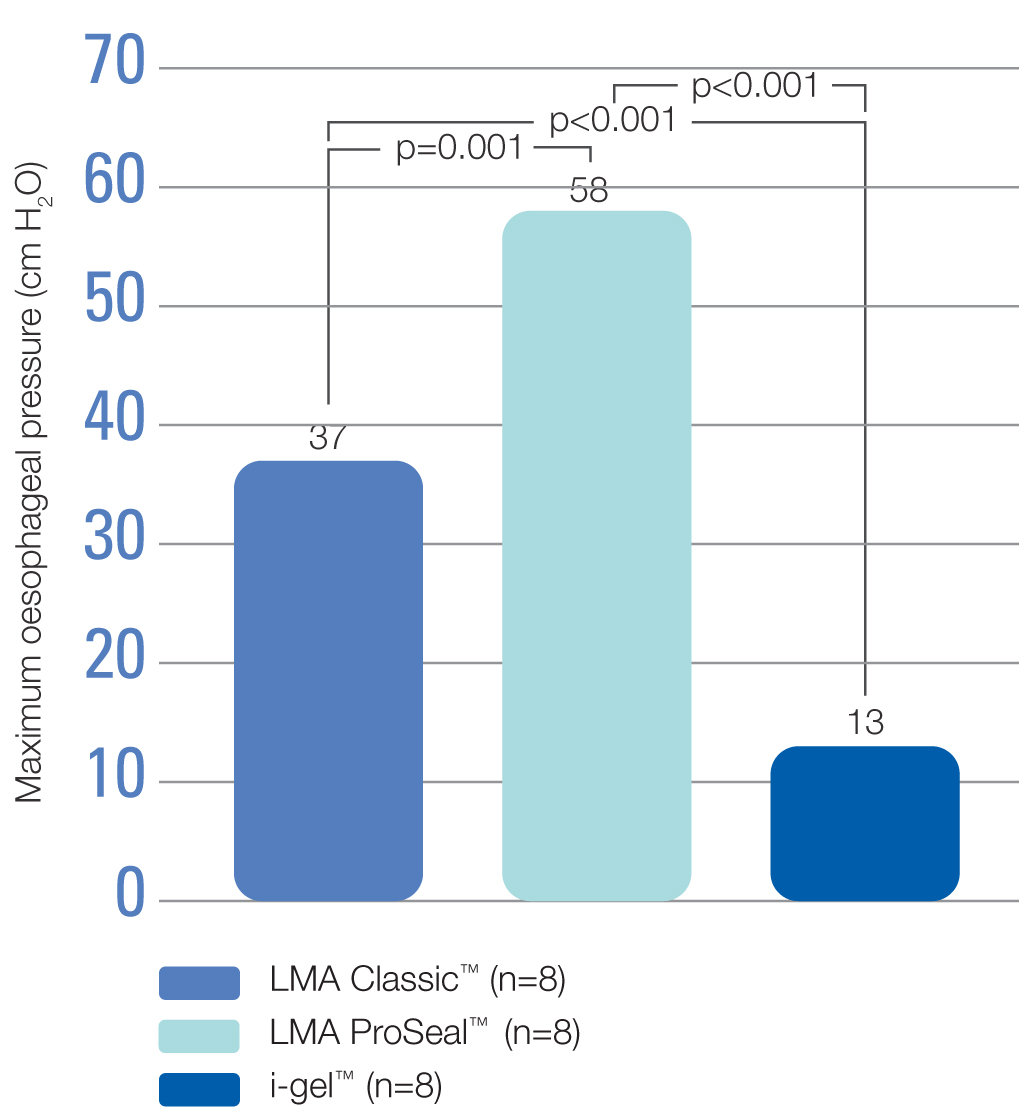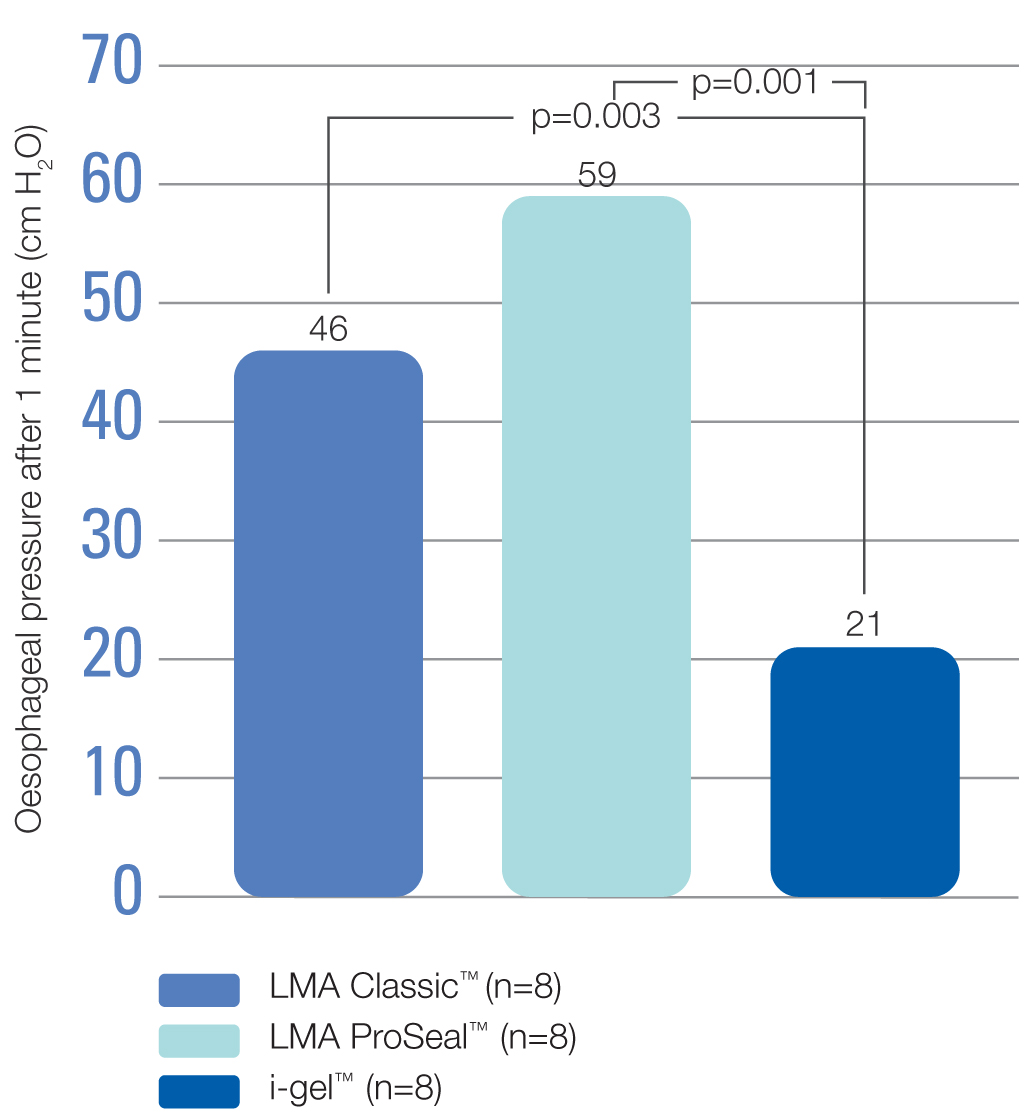Oesophageal seal of the novel supralaryngeal airway device I-Gel™ in comparison with the laryngeal mask airway Classic™ and ProSeal™ using a cadaver model
Authors
Schmidbauer W. et al.
Publication
Br J Anaesth 2009; 102 (1): 135-139.
Summary
- A study to compare the oesophageal seal of the LMA Classic™, LMA ProSeal™ and i-gel™ supraglottic airway devices in human cadavers
- The LMA Classic™ and LMA ProSeal™ devices withstood a significantly higher oesophageal pressure than the i-gel™ in cadaver models
- The LMA ProSeal™ and i-gel™ devices were associated with a rapid and complete drainage of gastrointestinal fluid through the oesophageal lumen in cadaver models, and their use may prevent tracheal aspiration
Objectives:
- To compare the oesophageal seal of the LMA Classic™, LMA ProSeal™ and i-gel™ supraglottic airway devices in human cadavers
Method:
- This study was undertaken using tracheae and oesophagi dissected from eight unfixed human cadavers
- An investigation of the oesophageal seal of the devices was undertaken by connecting the exposed ends of the oesophagi to a water column in the form of a vertical flexible hose
- A slow increase in oesophageal pressure was simulated by adding 5 cm of water every 10 seconds to a maximum pressure of 130 cm H2O
- A loss of oesophageal seal occurred when the column height no longer increased and fluid was detected in the lumen of the device
- A fast increase in oesophageal pressure was simulated by applying an immediate pressure of 130 cm H2O (achieved by filling the column to 130 cm H2O when the hose connected to the end of the oesophagus was clamped and then subsequently removed)
- The level of the column 1 minute after removing the clamp was considered the oesophageal seal
- Each test was conducted on ten occasions for each device and on each cadaver in a randomised manner
Results:
- The age and body weight of the 5 female and 3 male donors ranged from 67-84 years and 60-100 kg, respectively
- All three devices were successfully inserted into the cadaver models
- In order to undertake functional testing, it was necessary that the LMA Classic™ and LMA ProSeal™ be placed again in one case each and that the i-gel™ be placed again in two cases
- During the slow pressure increase, the maximum oesophageal pressure achieved before the occurrence of a leak was highest with the LMA ProSeal™ and lowest with the i-gel™ (Figure 1)
Figure 1. Median maximum oesophageal pressure achieved with the LMA Classic™, LMA ProSeal™ and i-gel™ during a slow increase in oesophageal pressure
- During the fast pressure increase, the oesophageal pressure 1 minute after the maximum pressure had been applied was highest with the LMA ProSeal™ and lowest with the i-gel™ (Figure 2)
- It was possible to rapidly and completely drain all of the oesophageal fluid through the lumina of the LMA ProSeal™ and i-gel™ devices, without any tracheal aspiration
Figure 2. Median oesophageal pressure with the LMA Classic™, LMA ProSeal™ and i-gel™ 1 minute after a fast increase in oesophageal pressure
Conclusions:
- The LMA Classic™ and LMA ProSeal™ devices withstood a significantly higher oesophageal pressure (as demonstrated by a better oesophageal seal) than the i-gel™ in cadaver models
- The rapid and complete drainage of gastrointestinal fluid through the lumen of the LMA ProSeal™ and i-gel™ devices may result in the prevention of tracheal aspiration

